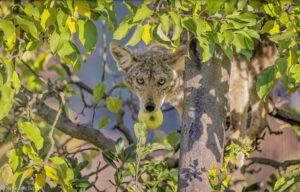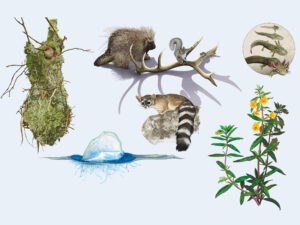Stewart Gilbert of San Rafael writes to ask: “Who makes these homes built out of sticks? They’re very common at China Camp. From a wood rat of some sort? The sticks can be large, requiring strength to pile up. I’ve never seen any sign of habitation or fresh construction. And they occur at both the bay water’s edge, and up on dry ridges, to about 500′ elevation or so.”
-300x218.jpg)
You’ve got it right, Stewart — it is a woodrat, the dusky-footed woodrat to be precise. These remarkable rodents build LARGE homes of sticks, and the homes can actually serve many generations of woodrats. Naturalist Alan Kaplan wrote us a story about them way back in 2007, At Home with the Packrats. That’s their other common name: packrats. They squirrel stuff away, so to speak, and researcheers have even used ancient packrat nests to find out what was happening in an area hundreds or even thousands of years ago!
Alan includes this delightful description of a woodrat’s home: “If you could see inside a woodrat’s house, you’d find a tidy little home: a nest bedroom or two lined with grasses and shredded bark; a pantry full of acorns and other seeds, leaves, and twigs for food; and several latrines for waste (a woodrat poops over 100 pellets a day!). The nests might have a few scattered California bay leaves to repel fleas. Food items that can be toxic when fresh (such as toyon leaves) are kept in a separate room to age before the rats move them to the pantry. When the latrines get full, woodrats clean house, shoving the pellets out into the forest, where they fertilize the soil.”
These rodents are exclusively nocturnal, so you’re very unlikely to ever see one out and about. But photographer Kevin Nibur got this shot of one in Henry W. Coe State Park. Cute!





